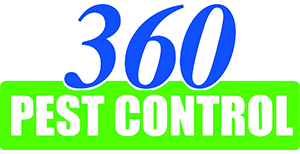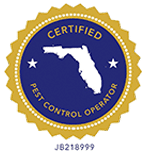Finding Termites Post-Inspection: Who Is Liable?
Is the inspector liable if you find termites after a WDO inspection? In short, it depends.

The WDO inspection is a visual-only inspection reporting the apparent conditions present on the day of the inspection. It is a snapshot in time. Termites may be present but not visible.
Hard-To-Reach Spaces
Termites may take years to show up inside our homes as they are often hidden inside wood framing, flooring, or trim. There may be no readily visible evidence at the time of the inspection. Further, not all areas of the home are generally accessible for visual inspection. Inspectors are allowed to exclude those areas which are not accessible for viewing.
Areas that are commonly excluded include ceiling joists, as they are covered in insulation, inaccessible attics and crawlspaces, garage walls covered with cabinets and stored goods, wood decks and fences not attached to the structure, wood decks that are not fully accessible underneath, exterior walls blocked by landscaping or shrubs, and any area over ten feet in height. When you are hiring a termite inspector, you can generally bet the low-fee inspector will fully exclude everything possible. All inspectors are not equal. If the inspector excluded most of the home, you may want to question the value of the report.
Inspection Report
Termite inspections are reported on FDACS Form 13645. The report form was first enacted into law in 1979 in Florida. Any inspector who performs a WDO/termite inspection, for a fee, must prepare and submit this form. The form requires the inspector to report on a range of wood-destroying organisms but for this article, we are only addressing termites. Form 13645 requires the inspector to report the finding of live termites, evidence, and damage to termites. Further, the inspector must report all evidence of previous termite treatments such as treatment labels, bait stations, or drill marks in slabs and foundations indicating a treatment was performed in the past.
If the inspector reports evidence of previous termite treatment, it does not mean your home is currently protected or that the home had live termites. The treatment may have been preventative such as a pre-construction slab treatment, or it may be outdated and no longer effective. Typically, liquid treatments are effective for a maximum of five years in our soil and climate.
While it can be frustrating to find you have active termites after you paid for a termite inspection, you should not panic or automatically assume the inspector failed to do their job, even if a competing termite company suggests so.
When The Inspector’s Liable
When would a termite inspector be liable for termites found after the inspection? The WDO report clearly states the inspection does not constitute a warranty or guarantee of any kind. The inspector could be held liable if:
- It was determined the inspector failed to properly inspect the structure by missing evidence or damage which would have been present at the inspection. This can be difficult to prove as it is scientifically impossible to date termite damage, so the time frame becomes important. Finding swarmers inside the home months after the inspection, without evidence or other damage, generally would not imply a negligent inspection.
- If it was determined the inspector should have seen evidence or damage in an accessible area that the inspector excluded. An example of this would be an inspector who excluded the crawlspace which was accessible by the rules and should have been inspected.
What You Should Do
What should you do if you find live termites after an inspection was performed? Here are some recommendations to consider:
- Call the company that performed the inspection and tell them what you found. Allow them to review the inspection report. The inspector may request the opportunity to reinspect to determine if they missed any evidence or damage which may have been present at the time of their inspection.
- Don’t automatically assume the inspector is at fault (even when their competitor suggests otherwise). Frankly, there are too many unscrupulous termite companies who gleefully try to discredit their competitors without knowing the facts. From our experience, they are almost always wrong.
- Understand termites may be hidden from view for months or years until, one day, they pop out of floors, walls, and ceilings and send swarmer alates off to establish new colonies. If your inspection was conducted before the first swarm, there may have been no visible evidence of hidden termites.
- Understand your inspector is concerned that you found live termites. Allow them to assess the situation. If you used an inspector who is licensed with a full-service pest control company, they will typically offer a discounted treatment cost if they are not at fault, or free treatment if they believe they did miss something.
- Remember a termite inspection reports the condition of the structure at the time of the inspection. The inspection cannot predict a future infestation and it provides no guarantee against hidden termites. Termites are a very real threat to our Florida homes and commercial properties. It is your responsibility to protect the structure. If the structure does not have an active system to control or prevent termites, you should hire a pest control company to provide protection.
Trusted Local Inspectors
360PestControl provides WDO/termite inspections in the greater Jacksonville, Tampa, St. Petersburg, Crestview, and Fellsmere areas. To request service or to learn more about our services including ant control, mosquito control, bed bug control, and lawn & ornamental pest control, contact 360PestControl at (904) 637-1109 today.







